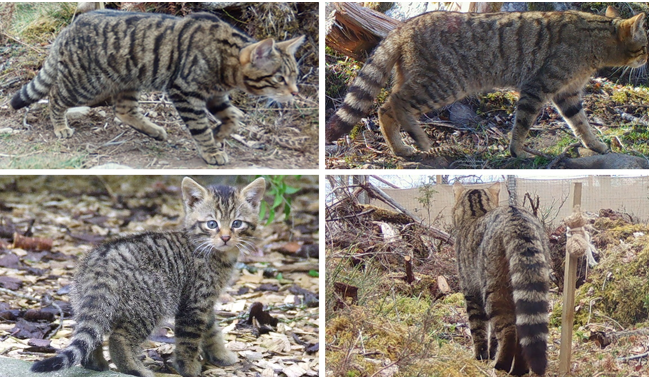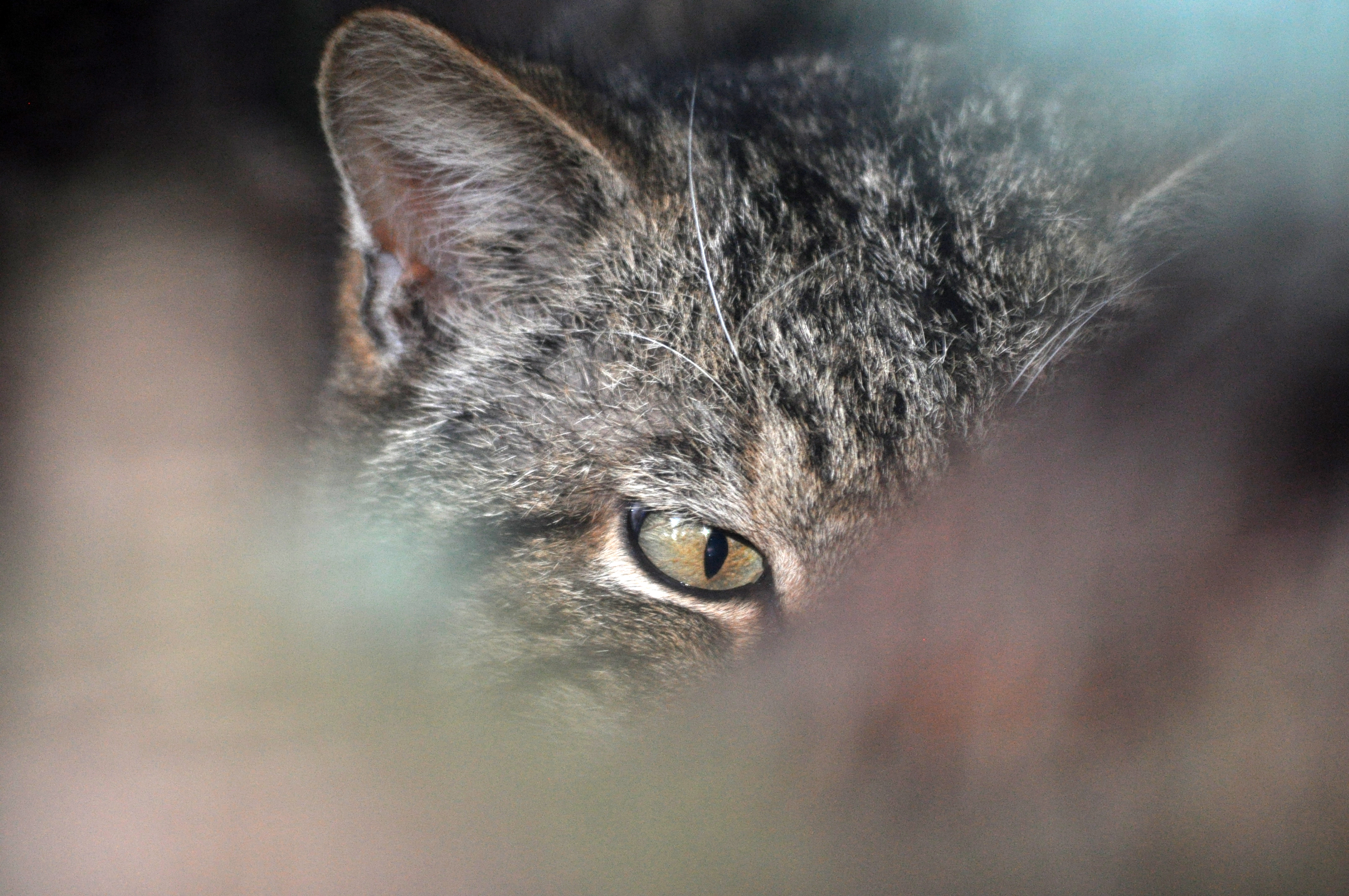Identifying wildcats: From miserable uncertainty to cheerful enlightenment
The threats facing Scotland’s native wildcats (Felis silvestris) are relatively unique – despite being a genetically distinct species from domestic cats (Felis catus), the two species can interbreed (or hybridise), producing fertile offspring. Hybridisation has caused the wildcat gene pool to become increasingly diluted, placing the wildcat at risk of genetic extinction.
This process of hybridisation can also make visually differentiating wildcats from domestic cats incredibly difficult, if not impossible. Hybrids (individuals with both wildcat and domestic cat genetics) can have many similar markings to wildcats.
In the world of wildcat conservation, the journey can sometimes feel like one is taking “the path from cocky ignorance to miserable uncertainty”- in the words of Mark Twain. This is certainly true when we are asked to determine whether a particular animal is a wildcat or a hybrid.
Since Saving Wildcats started, there have been many situations where we have been asked whether a cat that someone has spotted is a wildcat or not. In situations where we don’t have much information on the cat, and the little we do have is of variable quality, our identification comes with a disclaimer as long as a cat’s tail!
While many experiences such as these contributed to a great deal of ‘miserable uncertainty’ we eventually arrived at a state of ‘cheerful enlightenment’, so much so that we (NatureScot) published wildcat identification guidance. This expert written guidance incorporates information into a definition that can help to determine whether you have been lucky enough to spot a wildcat. This guidance is aimed at everyone, including members of the public wanting to report their sightings. It’s also suitable for those involved in the rehabilitation or neutering of feral and hybrid cats, gamekeepers involved in predator control, ecologists conducting surveys, scientists assessing road-killed cats, and wildcat conservation projects.
Working with stakeholders, we discovered that one of the problems with the historically used seven-point pelage (coat markings) scoring criteria, was the lack of knowledge on how each of the seven pelage characters were scored. The criteria came with a diagram of a flattened cat ‘skin’ showing the coat markings (see Annex 2 of the guidance) and practitioners sometimes used that diagram without reference to the text description. This led to misinterpretation, such as that a wildcat must have exactly three tail-rings. The new guidance uses a more descriptive criteria to be applied by those who are not experienced in scoring the pelage.
The guidance uses different criteria depending on the amount and quality of the information you have on the cat, ranging from incidents where there is almost no information, perhaps a sighting or a photograph, samples which can undergo genetic testing, or even to being able to examine the cat closely. Getting genetic samples of sufficient quality is tricky, and we are still a long way off having a rapid genetic test that can be applied ‘in the field so, for most situations, we are still relying on the cat’s appearance.
Now that wildcats are definitively back in the landscape, thanks to the work of Saving Wildcats, we have had to adopt a more precautionary approach to our definition in order to prevent animals being disturbed, or neutered by someone assuming it is a hybrid. The central principle is ‘if in doubt, assume it is a wildcat’. But if you can gather better information on the cat, then its identification status can also be updated.

Accurately identifying wildcats has never been an easy task, and it has perhaps been further complicated by the name of the species, which many people will take to be a ‘wild cat’ – i.e. any cat which isn’t curled up at home in a chair. There is still no way of easily distinguishing wildcat kittens from those of a tabby-striped domestic cat, other than using genetic testing or extreme patience (wait six months until the kitten is mature). But for everything else, you cany look at the guidance next time you see an animal which you think might be a wildcat!

